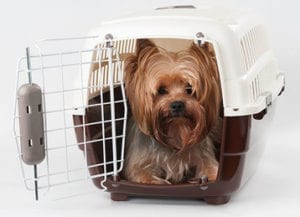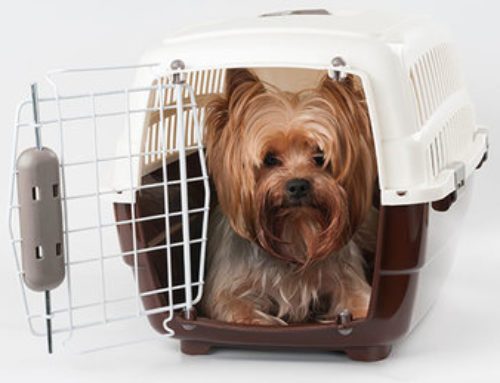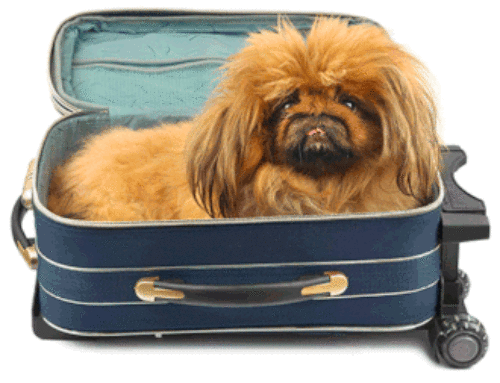 We’ve traveled around the world with our pets. In fact our pets have flown more air miles than many people. But it is important to understand the right way to fly with your pets. Here are some of the tips we’ve learned over time:
We’ve traveled around the world with our pets. In fact our pets have flown more air miles than many people. But it is important to understand the right way to fly with your pets. Here are some of the tips we’ve learned over time:
Check with your vet
Ask your vet if it is OK to fly with your pets. Your pets may have illnesses, conditions, or be of an age which might making flying unsafe. Also certain types of dogs are prone to problems with flying. Check and make sure all of your vaccinations are current – some airlines will required documentation from your vet.
Avoid layovers or connecting flights
Air flights are taxing on pets due to increased stress, changes in pressure, fear of flying, lack of ready access to food & water, or the inability to relieve themselves. Direct flights, especially red-eye flights, help to minimize some of these problems. When we fly overseas, we spend the night in a pet friendly hotel if there is a connecting city to allow the dogs to adjust. If you do this, verify with the airline in advance that you won’t be charged an additional pet fee.
Make sure your pet’s breed isn’t prohibited
Some airlines prohibit certain breeds of cats and dogs, especially short-nosed breeds like bull dogs and boxers due to potential breathing problems. Be sure to check with the airline before making a reservation.
Consider getting a pet tracking device
When pets are in an unfamiliar place, they are more likely to bolt out of fear. Pet tracking devices can help you find your pets if they wander or take off. If you are checking your pet in the baggage compartment, some trackers can help you locate where your pet is if they are inadvertently missed placed by the airline. You’ll find various types of trackers at the Dog Clinic. At a minimum these devices can give YOU a little more piece of mind that your pets are safe.
Check for international pet passport requirements
If you are traveling overseas with your pets, make sure to check for foreign regulations regarding bringing pets into that country. Most countries will require that your pet be micro chipped. Be aware that not all U.S. microchips are valid in other countries. Many countries require ISO compatible chips.
In addition, you will likely have to get a certificate from your vet. These international health certificates require original ink signatures from the issuing USDA Accredited Veterinarian and the endorsing APHIS Veterinary Medical Officer with the application of the APHIS embossed seal. These documents will be presented as you enter the country. Some countries have quarantine requirements. Make sure you fully understand those before traveling.
Keep your pet’s health records handy
When you check-in, the airline will ask to review your pet’s health certificates and documents, so keep them handy. Also if your pet has any health conditions, take those records with you too in case of illness while traveling. That way a local vet will have valuable information when you seek medical treatment.
Get an approved pet carrier.
You’ll probably be required by the airline to used an approved pet carrier. Check your airline’s requirements below.
Train your pet so it is comfortable in its pet carrier
There is nothing worse than putting a beloved pet into a pet carrier that they are not comfortable and secure being inside it. They may become frighten or terrified which can lead to a long flight of barking, howling or crying which your fellow passengers won’t appreciate either. Start training your pet a few weeks in advance. Take the training slowly. First just get them to go in the crate for a second or two. Give them a reward. Repeat this over and over, and have them stay longer each time. Over the next weeks, they will go in more willingly to the point where most will enter the crate on command.
Relieve your pets before your flight
A growing number of airports have doggy relief areas inside security checkpoints. Be sure to use them. If the airport doesn’t have one, do a regular check in but wait until closer to boarding time to pass through security. Here is a list of U.S. airports with relief stations.
Know your airline’s pet policies
In addition to restricting breeds, airlines also have policies on the size and weight of pets that can be stowed under a seat. They have detailed sets of policies available on their website regarding taking pets on vacation with you. Most airlines restrict the number of pets that can fly in each cabin. So book early or you might not get the slot(s) available for your cabin.
Check out specific requirements for each airline below:
If you follow these tips, you will enjoy a safe, comfortable and stress-free flight for both you and your pets.
So how to choose the right vacation for you?
Vacations are an investment! With literally thousands of options, choosing the right vacation and the best value is difficult to sort through. That’s where I bring my 12 years of travel experience and expertise to do this right, and get you the best value for your money. With the backing of the largest travel consortium behind me, we have options you can’t find online. Plus our work just gets started once we book your dream vacation. Chat with us to learn more.
The world awaits you and we look forward to assisting you in choosing the exact right adventure on the waters or land for you and your companions!






